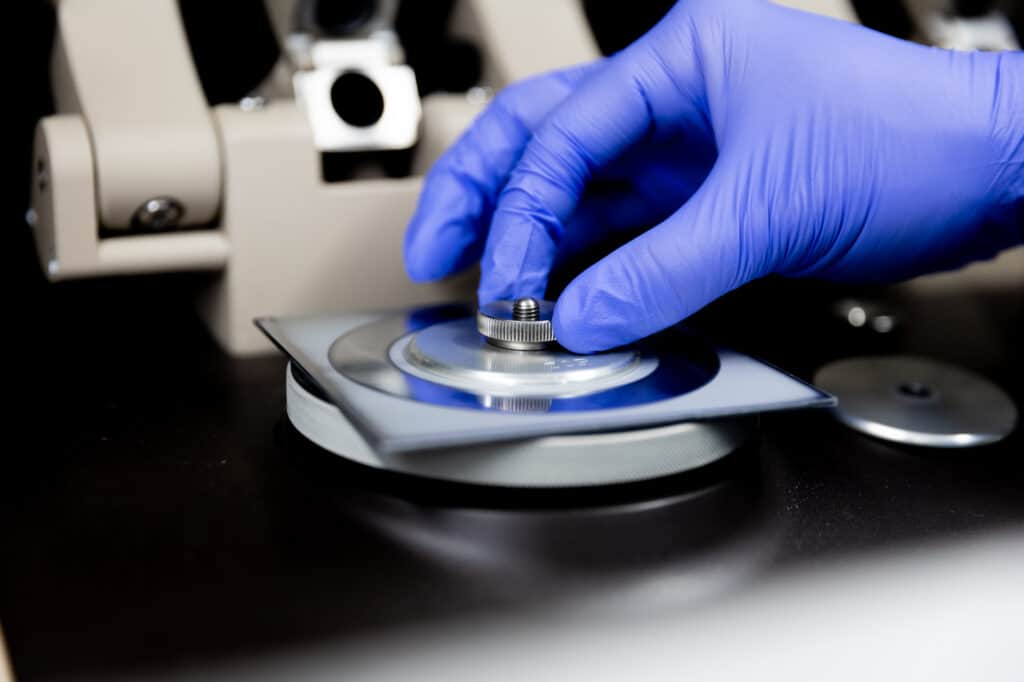
Among the many tests Armoloy conducts on its advanced coatings are a variety of assessments to confirm compliance with ASTM standards. Formed in 1898, and formerly known as the American Society for Testing and Materials, ASTM is an international organization that defines and publishes technical standards for many types of materials, products, systems, and services.
It does this with contributions from its membership, which is made up of more than 30,000 of the world’s most respected technical experts and business professionals in 140 countries. These individuals, working in nearly 150 standards-writing committees, develop specifications, testing methods, classifications, guides, and best practices used by public entities and private companies around the globe.
ASTM’s expertise in developing and maintaining technical standards is enhanced by the fact that the organization serves a long list of industries, including:
- Metals
- Petroleum
- Construction
- Consumer products
- And many more
Lessons learned in each industry benefit the others as they provide insights for enhancing or updating standards.
Adhering to ASTM guidelines is voluntary. However, doing so sends a strong message about a company’s focus on quality.
Exceeding ASTM’s High Standards
There are over 12,000 ASTM standards used worldwide. They provide multiple benefits, from enhanced product and service safety, to giving people greater confidence in the items they purchase and use.
As a company committed to providing the most effective protective coatings available, Armoloy meets or exceeds the many specifications that apply to its offerings.
Some specifications include:
- ASTM B117 Salt Spray (Fog) Testing
- ASTM E 376 Measuring of Coating Thickness by magnetic Field or Eddy Current (Electromagnetic) Test Methods
- ASTM E 384 Microhardness of Materials
- ASTM 487 Measurement of Metal and Oxide Coating Thicknesses by Microscopical Examination of a Cross Section
- ASTM 499 Measurement of Coating Thickness by the Magnetic Method
- ASTM B504 Measurement of Thickness of Metallic Coatings by the Coulometric Method
- ASTM B 568 Measurement of Coating Thickness by X-Ray Spectrometry
- ASTM F519 Mechanical Hydrogen Embrittlement Testing of Plating Processes
- ASTM B571 Qualitative Adhesion Testing of Metallic Coatings
These tests are administered regularly to plating baths to ensure ongoing compliance with the standards. Consequently, customers can be confident of a number of coating characteristics. For example, the hardness of a plating as applied to a “test coupon” is measured to ensure it meets a specified requirement. The susceptibility of a specimen to hydrogen-induced cracking is also assessed.
In addition, test coupons are evaluated to ensure a coating provides the desired corrosion resistance. Adhesion is another critical characteristic that is measured at regular intervals. And Taber abrasion evaluates abrasion resistance on a non-lubricated surface in a dry friction environment.
Armoloy’s ASTM Testing Is a Customer’s Competitive Advantage
There are many advantages of applying advanced coatings to metal surfaces in order to prevent or delay the onset of issues that lead to metal failure. Five of the most important benefits are:
Increased protection with no appreciable change in item dimensions.
Armoloy coatings are incredibly strong even though they are applied in very thin layers. As a result, companies can continue using existing items, with no redesign required. This can be extremely beneficial if a large quantity of metal assets has been purchased and a company is faced with a potential financial loss because of metal failure issues.
Increased longevity
Properly coated items last longer because they resist damage and have greater lubricity, so reduced friction. This means businesses spend less on repairing or replacing tools, devices, and systems.
Less downtime.
When a process has to be stopped because of metal failure problems, the situation is very costly. Properly coated metal surfaces are less prone to failure, so the systems they are in stay online more consistently, with fewer repair- or replacement-related shutdowns.
Better performance
Whatever method a company uses to measure the success of its operations (consistency, accuracy, etc.), protected metal assets perform at a higher level. And that enhanced performance can affect everything from revenue to many other business metrics.
Positive business reputation
Whether it is the visual appearance of tools and equipment or the increased efficiency, effectiveness, and productivity of processes, items that are layered with advanced coatings look and function better, and that puts a company in a positive light—with its customers, business partners, and other stakeholders.
Ultimately, the companies that excel in their market are those that leverage every available opportunity for getting ahead. Thoroughly tested, advanced metal coatings help companies do exactly that.